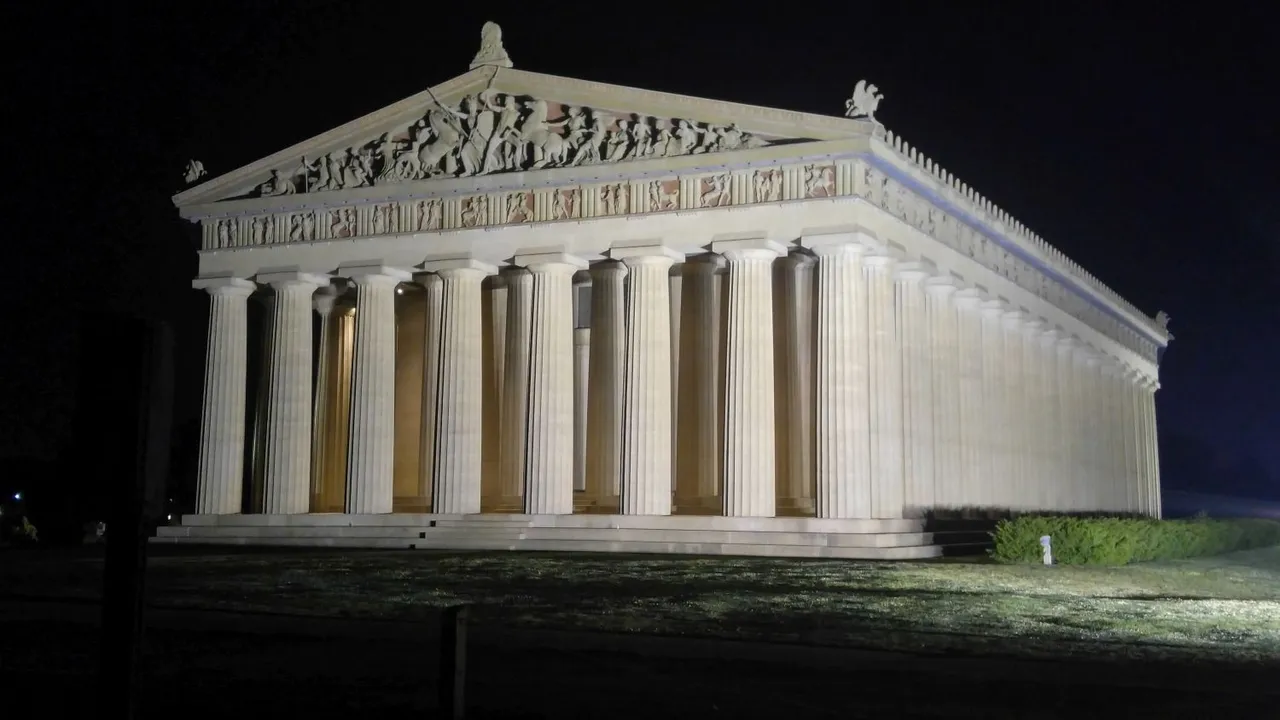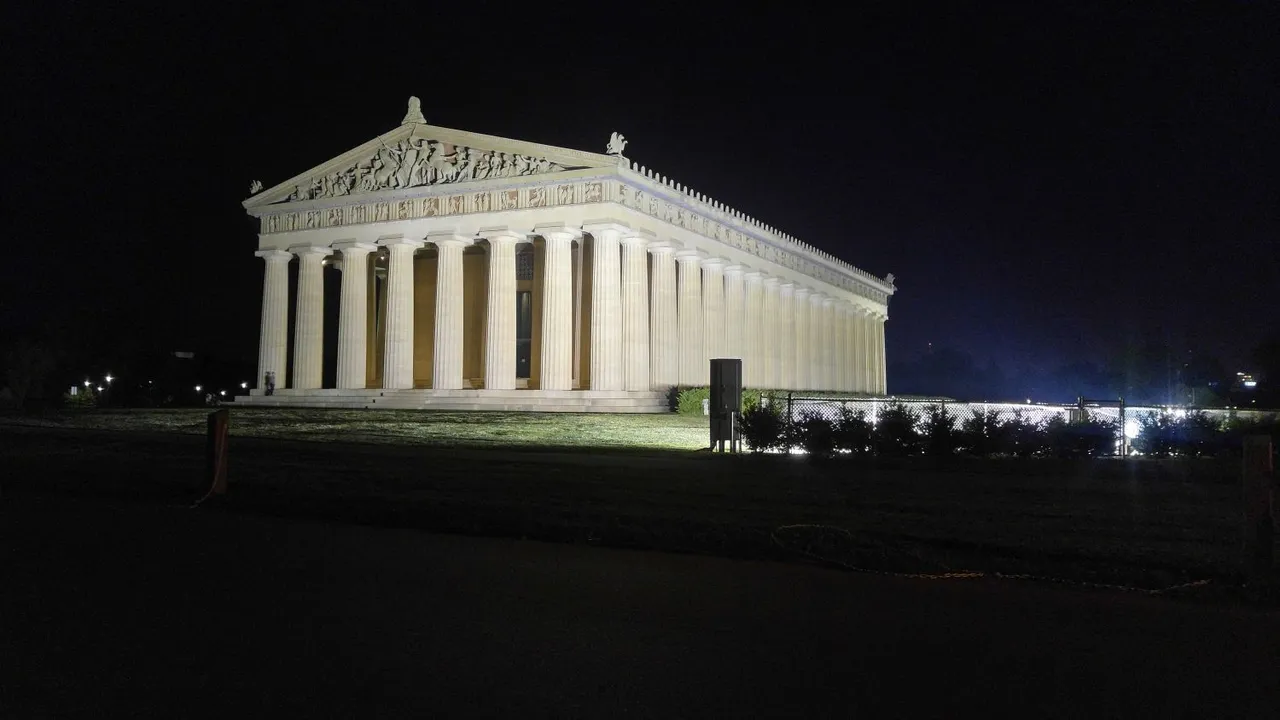This is one of several photographs I took of the Parthenon last year, using my LG V10 Smart phone. The most interesting thing is that I had no need to travel to Greece, as this particular Parthenon is located in Nashville, Tennessee, less than two hours from my home.

The centerpiece of Centennial Park, a large urban park just west of downtown Nashville, this full-scale replica of the Parthenon in Athens, Greece, was designed by Confederate Civil War veteran William Crawford Smith, and built for the 1897 Tennessee Centennial Exposition, to celebrate Tennessee' founding a century earlier, and to acknowledge Nashville's place as "The Athens of the South."
There were several other buildings of classical origin created for the Exposition, but the Parthenon was the only direct reproduction, and it was the only one preserved by the city long term. The Nashville Parthenon contains several direct plaster castings of the original marble statues housed in the Parthenon in Athens; the originals are housed in the British Museum, in London, and in the Acropolis Museum, in Athens.
The building was not originally meant to last past the Exposition, and so was made mostly of plaster, wood and brick, but it turned out to be so costly to demolish, and was so popular with Nashville citizens, that the decision was made to keep it permanently.
After years of degradation by the weather, the permanent concrete structure was built beginning in 1925, and competed in 1931. The building now serves as an art museum, and theatrical productions are staged there as well, including classical plays.
The building also served as a backdrop in the pivotal political rally scene, in Robert Altman's 1975 film, "Nashville."
In 1990, artist, sculptor and Nashville native Alan LeQuire unveiled his recreation of the original 42' tall Athena Parthenos statue, which he created with the help of antiquities scholars, and careful attention to the description of the construction of the original by Phidias. This brought to life the long lost original, which was originally created of ivory and gold, and had been housed in Athens' Parthenon from its creation in the 5th century BCE, until the Romans removed it in the 5th century CE.
It was mentioned as having been in Constantinople in the 10th century, but was lost to time thereafter, and its present whereabouts are unknown, if indeed it still exists.
The Nashville reproduction of the Athena Parthenos statue is made primarily of plaster and gypsum cement, over an aluminum armature in the head, and steel in the lower body.

The Parthenon was closed when I took these photos, so I have yet to see it inside, but as something of an art museum junkie, I'll have to check it out one day soon. I'll be certain to take some good photographs when I do visit.
All words and images are my own.
Resteeming is welcome, you may link to my post from your own website or blog, and you may use excerpts and/or images as long as you credit me, Cori MacNaughton, and link back to this post.
Please ask for permission, before using my work without linking to this post, as all rights are reserved.
References:
http://www.nashville.gov/Parks-and-Recreation/Parthenon.aspx
https://www.artsy.net/article/artsy-editorial-full-scale-replica-parthenon-nashville-tennessee
https://en.wikipedia.org/wiki/Parthenon_(Nashville)
https://en.wikipedia.org/wiki/Athena_Parthenos